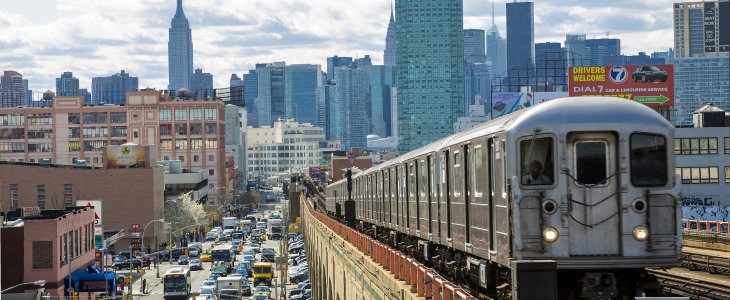Metro trains can cause traumatic injuries and fatalities when they derail or collide with other trains, vehicles, or train stations. Victims of metro train accidents often sustain substantial financial losses because of the physical injuries from a metro train accident.
Victims also suffer great emotional and mental anguish because of the accidents. Who is liable for these damages? This article, the first in a three-part series by our New Jersey mass transit accident attorneys, focuses on answering this question.
Mass Transit Systems in New Jersey
The state’s mass transit system, encompassing buses and trains, is among the most extensive in the country. It’s typically a safe and efficient mode of transportation. However, despite rigorous safety standards, accidents involving these systems can still occur, leading to injuries or fatalities. These incidents often raise questions about safety protocols and operational procedures.
Recent Developments in Mass Transit Liability
A landmark case in New Jersey law is the New Jersey Supreme Court’s decision regarding NJ Transit’s liability in personal injury suits. This case revolved around NJ Transit’s duty of care as a public common carrier. In the case of Maison v. NJ Transit, a college student, Maison, sustained severe injuries due to the negligence of fellow passengers and the failure of the bus driver to intervene. Maison filed a complaint alleging that NJ Transit and the driver breached their common-carrier duty to protect her, resulting in severe and permanent injuries. The court held NJ Transit and the driver liable, emphasizing that public entities like NJ Transit are subject to the same heightened duty of care standard as private common carriers.
In the case of Galette v. NJ Transit (2023), Cedric Galette filed a negligence claim against New Jersey Transit Corporation (NJ Transit) following a collision between an NJ Transit bus and the personal vehicle he was a passenger in, which occurred on August 9, 2018, in Philadelphia, Pennsylvania. Galette suffered physical injuries from the incident. NJ Transit sought to dismiss the case based on the doctrine of sovereign immunity, claiming it was an arm of the State of New Jersey. However, the court denied NJ Transit’s motion to dismiss, affirming that NJ Transit operates as an independent entity and is not a state instrumentality for the purposes of sovereign immunity. This ruling implies that NJ Transit can be subject to legal disputes initiated by private parties, thus negating its claim of sovereign immunity in this context.
Liability for a Metro Train Accident
Liability in mass transit accidents is complex. If a transit operator, such as NJ Transit, fails to adhere to established safety laws or procedures, they may be considered negligent. Such negligence, if it leads to an accident causing harm, can result in the operator being legally responsible for the damages incurred by passengers or other affected parties.
In New Jersey, public transportation entities are considered “common carriers,” legally obligated to provide an exceptionally high level of care. This means they must take all reasonable steps to ensure passenger safety and minimize risks. This heightened duty of care makes them more accountable in the event of an accident.
Proving Negligence
Establishing liability in mass transit accidents hinges on proving negligence. This involves demonstrating that the transit company failed to meet its duty of care and that this failure directly caused the injuries. This process often requires a thorough investigation into the accident, including reviewing safety protocols and examining the actions of the transit staff.
To establish liability, one must identify and prove several key elements that constitute negligence. These elements include:
- Duty of Care: This refers to the legal obligation of the metro transit company to ensure the safety of its passengers and staff. The company is expected to operate the trains safely, maintain equipment, and follow all relevant safety regulations.
- Breach of Duty: This element involves showing that the transit company failed to uphold its duty of care. A breach might occur due to various reasons, such as poor maintenance of the trains, inadequate staff training, or failure to comply with safety standards.
- Causation: It must be demonstrated that the breach of duty directly caused the accident. This means linking the transit company’s negligence to the incident. For instance, if an accident occurred due to malfunctioning brakes that were not properly maintained, this would be a direct causation.
- Damages: Finally, it must be proven that the accident resulted in actual damages. This could include physical injuries to passengers, psychological trauma, or even fatalities.
Example of Negligence in a Metro Train Accident
Let’s consider an accident in which a metro train derails due to poorly maintained tracks. In this case:
- Duty of Care: The metro transit company has a duty to maintain the tracks in a safe condition.
- Breach of Duty: If an investigation reveals that the company neglected regular maintenance checks or ignored signs of wear and tear on the tracks, this constitutes a breach of their duty of care.
- Causation: The link between the neglected maintenance and the derailment needs to be established. If experts can testify that the derailment would not have occurred if the tracks had been properly maintained, this shows causation.
- Damages: Passengers might have suffered injuries, or there could have been loss of life due to the derailment. These are the damages resulting from the negligence.
In such cases, proving negligence often requires extensive investigation, including the analysis of maintenance records, employee training protocols, and adherence to safety standards. Expert testimony can also play a vital role in establishing the links between the breach of duty and the accident.
Multiple Parties’ Liability
In mass transit accidents, liability may extend beyond the transit company. It can include the driver or operator, the vehicle or equipment manufacturer, maintenance providers, and potentially the municipality or state government. Each party’s role and responsibility in the accident are scrutinized to determine their liability.
Once the cause of the accident is established, we can determine who is liable for damages arising from the accident. Depending on the factors involved in the accident, one or more parties may be named in a metro train accident lawsuit. Parties that may be responsible for a metro accident include:
- Engineers, conductors, and other employees
- Railroad and metro companies
- Government agencies or entities
- Manufacturers, suppliers, or distributors of trains, parts, and equipment
- Owner of the railroad tracks or station
- Entities or companies responsible for maintenance of the train, tracks, equipment, stations, or the areas surrounding tracks, crossings, and stations
Identifying the liable parties is important because you can only obtain compensation for damages from a party who was responsible in some way for causing the metro train accident.
However, it is also important because the laws and rules for filing a claim and lawsuit involving a government agency or entity are different from claims against other parties. In most cases, deadlines are much shorter in cases involving government entities. A New Jersey metro accident attorney can be of great assistance in avoiding errors related to cases involving government agencies or entities.
Investigating the Cause of a Metro Train Accident
Determining the party or parties liable for damages sustained because of a metro train begins with determining the cause of the accident. There are many causes of train accidents, which may involve several factors.
Some common causes of metro train accidents include:
- Human factors
- Collisions
- Equipment failure or malfunction
- Track problems
- Derailments
- Signal problems
It is common for metro companies, government agencies, and other parties to blame each other for the cause of the train accident. Investigating the cause of the crash is a crucial step in building a case for fault and liability. Even though local, state, and federal agencies may conduct investigations to determine the cause of the crash, an experienced New Jersey metro accident attorney conducts an independent investigation to ensure evidence is preserved and all parties with potential liability for the accident are identified.
Some of the steps taken during a metro train accident investigation include:
- Interviewing eyewitnesses and other parties involved in the accident
- Photograph and video the accident scene, train, and equipment
- Obtaining copies of reports from government agencies, including the NTSB report, FRA report, and reports from local agencies
- Surveying the collision site and track area
- Obtain the full history and background of each employee working at the time of the accident or involved in the train’s maintenance or operations.
- Obtain safety records for all parties involved.
- Obtain information from the train’s black box or ECM (Electronic Control Module)
- Consult a train accident reconstruction expert.
An attorney digs deep into the accident and the history of the parties involved to discover who is truly responsible for the metro train accident.
Contact a New Jersey Mass Transit Accident Attorney for Help
If you are injured in a metro train accident in New Jersey, you may need to act quickly to protect your legal right to receive compensation for your injuries. You’ll want to search for a “personal injury lawyer near me” or “the best lawyers for personal injury.” When doing so in New Jersey, consider contacting our New Jersey mass transit accident lawyers today to discuss your options for filing an injury claim.
Stay tuned for the next part of this series, where we’ll dive deeper into mass transit accidents in New Jersey.

